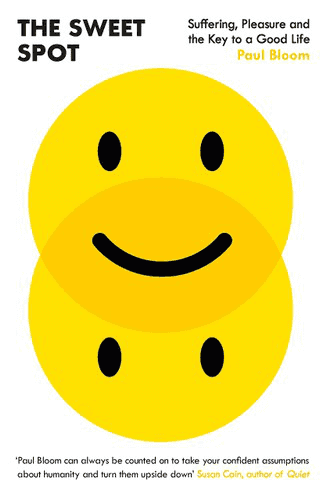What is
The Sweet Spot by Paul Bloom about?
The Sweet Spot explores how embracing discomfort and chosen suffering enhances happiness and meaning. Paul Bloom argues that voluntary struggles—like challenging hobbies or spicy foods—intensify pleasure through contrast, foster resilience, and deepen life satisfaction. The book blends psychology, philosophy, and neuroscience to challenge the notion that all pain is harmful.
Who should read
The Sweet Spot?
This book is ideal for readers interested in psychology, self-improvement, or philosophy. It suits those seeking a fresh perspective on happiness, professionals navigating burnout, or individuals curious about balancing pleasure with purpose. Bloom’s accessible style makes complex theories digestible for both casual and academic audiences.
Is
The Sweet Spot worth reading?
Yes—the book offers actionable insights into transforming pain into growth. Bloom’s research-backed arguments, like the “Ikea effect” (valuing self-made efforts) and “benign masochism” (enjoying controlled discomfort), provide tools to reframe challenges. Its blend of storytelling and science makes it a compelling read for personal or professional development.
What is benign masochism in
The Sweet Spot?
Benign masochism describes seeking mild discomfort for eventual pleasure, like eating spicy food or running marathons. Bloom explains how such activities create a “contrast effect,” where relief from pain heightens enjoyment. This intentional suffering builds resilience and appreciation for life’s joys.
How does
The Sweet Spot redefine happiness?
Bloom argues happiness isn’t about avoiding pain but integrating meaningful struggles. Examples include artistic pursuits requiring frustration or relationships needing effort. By choosing challenges, we amplify satisfaction through mastery and contrast, making joy more profound and enduring.
What is the “Ikea effect” in the book?
The “Ikea effect” refers to valuing self-built or hard-earned outcomes more than effortless ones. Bloom ties this to happiness: investing effort into goals—like DIY projects or career milestones—creates deeper fulfillment than passive pleasures, reinforcing the link between struggle and meaning.
What are criticisms of
The Sweet Spot?
Critics note Bloom’s focus on chosen suffering may overlook systemic hardships (e.g., poverty or trauma) that aren’t voluntary. Others argue some examples, like extreme sports, aren’t accessible to all. However, Bloom acknowledges unchosen suffering’s risks while advocating for controlled challenges.
How does
The Sweet Spot apply to modern life?
The book resonates in today’s fast-paced, comfort-focused world by advocating resilience-building. For example, embracing difficult conversations or digital detoxes can counterbalance instant gratification. Bloom’s ideas help readers navigate stressors like workplace burnout or social isolation.
What quotes define
The Sweet Spot’s message?
- “Pleasure exists in the space between pain and relief”: Highlights how contrast enhances joy.
- “Suffering can sweeten life”: Emphasizes growth through voluntary struggle.
These quotes underscore the book’s thesis that strategic discomfort enriches life.
How does
The Sweet Spot compare to other psychology books?
Unlike books promoting sheer positivity (e.g., The Power of Now), Bloom validates suffering as a catalyst for growth. It aligns with Grit by Angela Duckworth but adds a philosophical lens on pleasure’s role. Unique focus on “benign masochism” sets it apart.
Can
The Sweet Spot help with personal goals?
Yes—Bloom’s framework encourages reframing challenges as growth opportunities. For example, viewing a career setback as a chance to build resilience or using fitness goals to practice embracing discomfort. These strategies foster perseverance and long-term satisfaction.
Why is
The Sweet Spot relevant in 2025?
In an era of AI-driven convenience and rising mental health challenges, Bloom’s case for intentional struggle offers a counterbalance. The book equips readers to handle uncertainty, cultivate grit, and find meaning amid rapid technological and social change.








